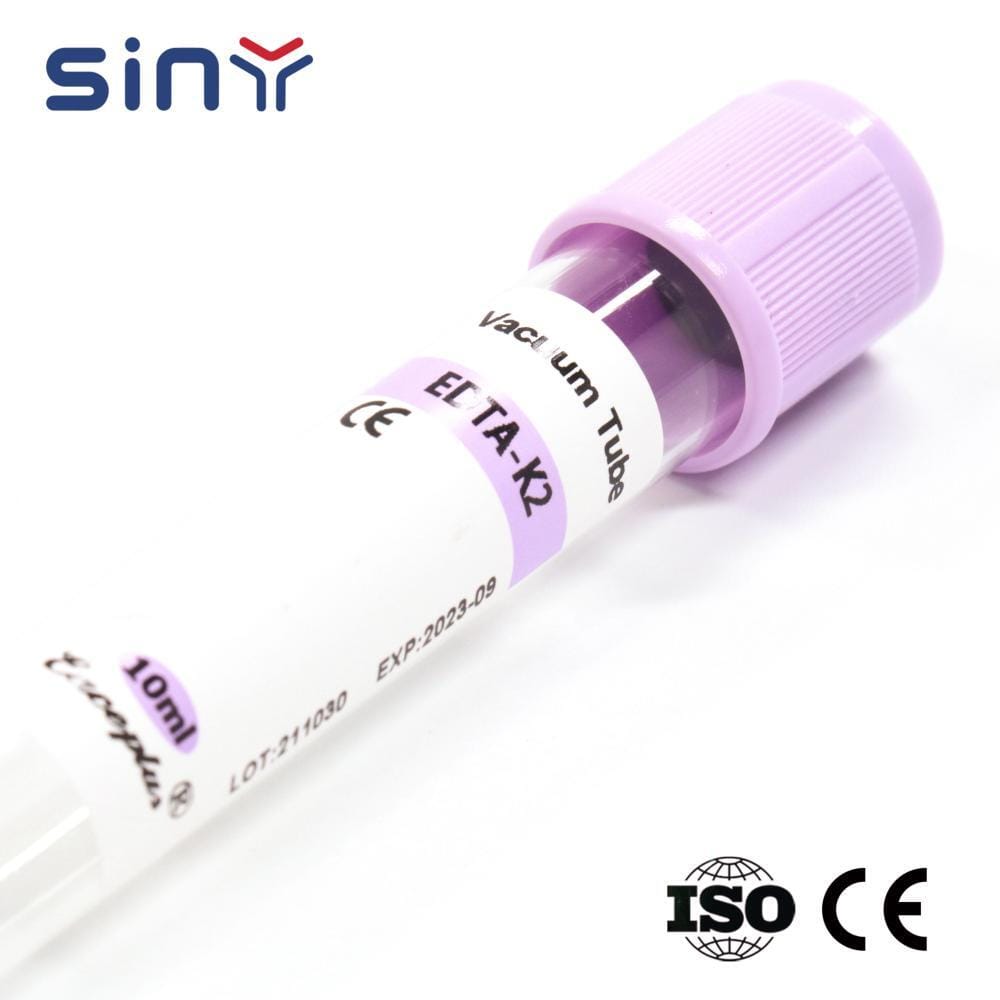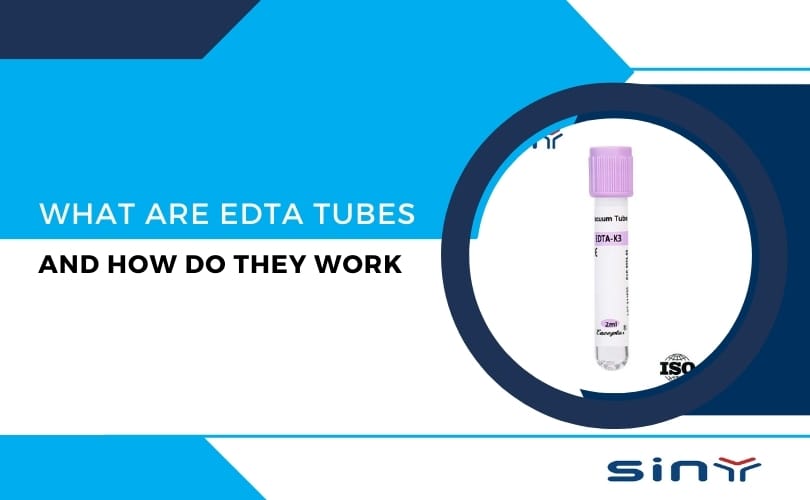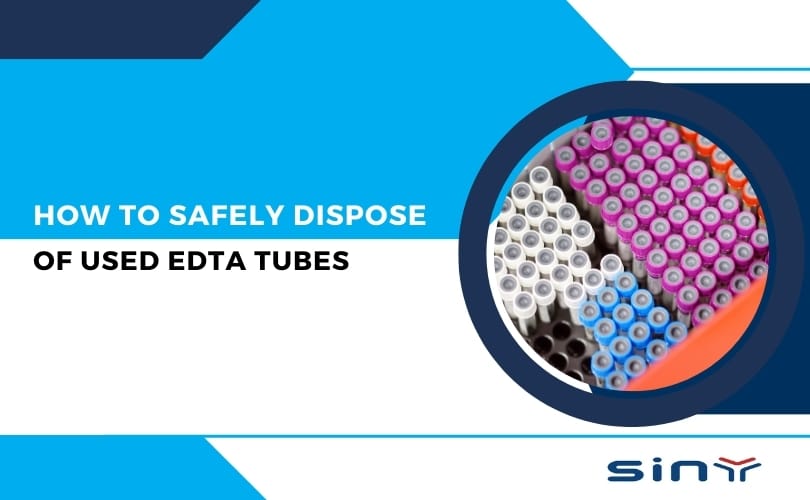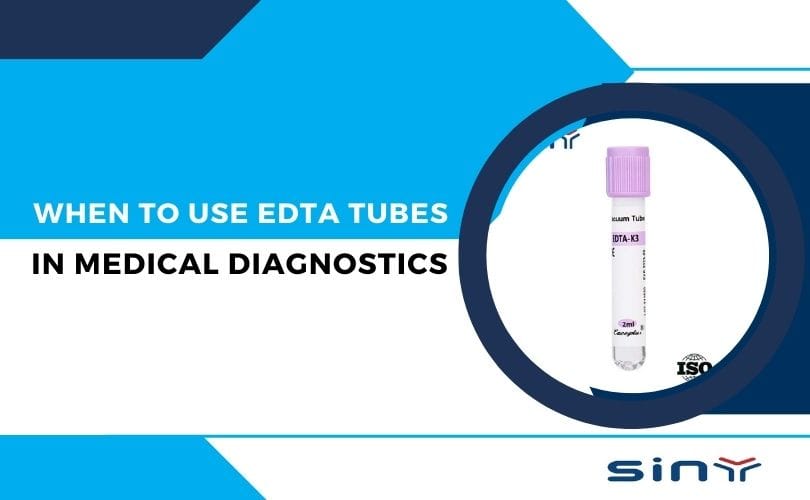EDTA tubes are specialized blood collection tubes that contain ethylenediaminetetraacetic acid (EDTA), a potent anticoagulant. These tubes are essential for collecting and preserving blood samples in various medical and laboratory settings.
EDTA, ethylenediaminetetraacetic acid, commonly known as edetic acid, is a common chelating agent. It can chelate with heavy metal ions to form soluble chelated salts. EDTA and its disodium salt and tetrasodium salt are widely used.
Here’s an overview of what EDTA tubes are and how they work:
What Are EDTA Tubes?
- EDTA tubes are designed to prevent blood from clotting during collection and storage. They come in different formulations, primarily K2 and K3 EDTA, which refer to the number of potassium ions chelated by the EDTA molecule:
- K2 EDTA: Contains two potassium ions.
- K3 EDTA: Contains three potassium ions.

These tubes are typically color-coded with a lavender or purple cap, indicating their use for hematological tests.
How Do EDTA Tubes Work?
Anticoagulation Mechanism: When blood is drawn into an EDTA tube for blood collection tube, the EDTA binds to calcium ions in the blood. Calcium is essential for the coagulation cascade; by chelating (binding) these ions, EDTA effectively prevents clot formation, allowing for accurate analysis of blood components such as red blood cells, white blood cells, and platelets.
Preservation of Blood Components: The use of EDTA is crucial for tests that require whole blood analysis, such as complete blood counts (CBC), erythrocyte sedimentation rate (ESR), and hemoglobin A1c testing. These tests rely on accurately measuring cellular components, which can be altered if clotting occurs.
Applications in Molecular Diagnostics: EDTA tubes are also used for molecular diagnostics and routine hematology tests. They facilitate DNA extraction and polymerase chain reaction (PCR) amplification by preventing clotting and preserving the integrity of genetic material.
This makes them vital for genetic testing and research.
Sample Stability: EDTA tubes helps maintain sample stability during storage and transport, ensuring reliable laboratory results. This stability is essential in environments where samples may be stored for extended periods before analysis.
Why Are EDTA Tubes Used in Blood Collection?
EDTA tubes are particularly popular in haematology, which studies blood and blood diseases. They’re used for tests that require whole blood or plasma, like Complete Blood Counts (CBCs) and blood smears. These tests require blood cells to stay intact and not form clots, as clots would interfere with the counting and examining of individual blood cells.
Some common reasons EDTA tubes are used include:
- Preserving the morphology of blood cells: EDTA stabilizes the cells’ structure, allowing for accurate counting and morphology analysis under a microscope.
- Preventing clotting in samples that need to stay liquid: Blood samples used for cell counts, flow cytometry, and molecular diagnostics must remain unclotted for precise results.
- Maintaining sample integrity for extended periods: EDTA helps keep blood samples viable longer, essential for labs processing multiple samples throughout the day.
Conclusion
EDTA tubes play a critical role in modern medical diagnostics by providing a reliable means of collecting and preserving blood samples without clotting. Their ability to maintain sample integrity makes them indispensable for routine hematological tests and advanced molecular diagnostics. Healthcare professionals can ensure accurate testing outcomes by understanding how these tubes work, ultimately contributing to better patient care.
FAQs EDTA tubes
What are EDTA tubes?
EDTA tubes are blood collection containers that contain ethylenediaminetetraacetic acid (EDTA), an anticoagulant that prevents blood from clotting. They are primarily used for hematological tests and molecular diagnostics.
What is the purpose of EDTA in these tubes?
EDTA works by binding to calcium ions in the blood, which are necessary for the coagulation process. This prevents clotting and preserves the integrity of blood samples for accurate testing.
What types of EDTA tubes are available?
There are two main types of EDTA tubes: K2 EDTA (with two potassium ions) and K3 EDTA (with three potassium ions). Each type has specific applications in laboratory testing.
What tests are commonly performed using EDTA tubes?
- EDTA tubes are essential for various tests, including:
- Complete Blood Count (CBC)
- Erythrocyte Sedimentation Rate (ESR)
- Hemoglobin A1c testing
- Molecular diagnostics, such as PCR and DNA extraction.
Can EDTA tubes be used for blood bank procedures?
Yes, EDTA tubes can be used for routine blood bank procedures as they meet ISO and CE requirements for safety and effectiveness.
How should I fill an EDTA tube?
It is important to fill the tube to the indicated volume to maintain the correct blood-to-anticoagulant ratio. Overfilling may cause clotting, while underfilling can compromise the cell morphology of the sample.
What happens if I do not mix the blood with the anticoagulant?
Failing to mix the blood with the anticoagulant immediately after collection can lead to clot formation, which may result in inaccurate test results.
How should EDTA tubes be stored?
Store EDTA tubes at room temperature away from direct sunlight and extreme temperatures to maintain their integrity until use.







